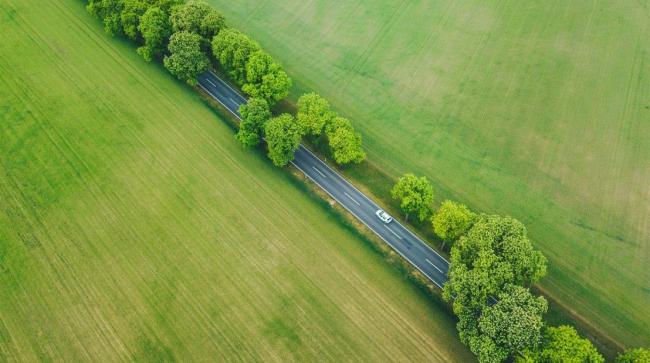Frequently asked questions
What’s the best week of the month to move?
The middle two weeks of the month are the best time to move if you are on a budget. Movers typically charge more during the first and last week of the month.
What’s the best time of the week to move?
Monday through Thursday is the best time of the week to move if you’re looking to save money. Weekend moving rates are typically 20% to 30% more.
What’s the best time of day to move?
Try to book your move early in the morning, so you’re the first one of the day. Movers will be fresh and maybe faster. It also avoids any delays from other earlier jobs.
Will the coronavirus impact peak moving season?
The spread of coronavirus has delayed the start of peak moving season in 2020 with the real estate market stalled and people generally nervous about making any major life transitions. Most military moves are also on hold as a result of COVID-19, but there is a chance that moving could take place later in the season if the impacts of the virus wane.
Компания-производитель
Сейчас компанию представляют три крупных предприятия. Каждое сосредоточено на отдельном производстве. Одно подразделение выпускает продукты, другое вина, и третье кофе, сладости, мороженное. Поддерживает партнёрские отношения с Mövenpick Hotels & Resorts десятки лет. Впервые о Мовенпик стало известно в 1948 году, кода деятельность компании стартовала с открытия ресторана.
Продажа кофе началась позднее, в 1963 году появился первый продукт под названием «The Heavenly». Он реализовывался в жестяных упаковках, только в фирменном ресторане. Реализация происходила в рамках Швейцарии, об экспорте речь не шла.
На мировой рынок компания вышла в 1970-е годы. Тогда рестораны стали открываться на территории соседней Германии. Кофе продавался и там. Спустя более 40 лет бренд появился на Азиатском рынке, завоевав практически все континенты. Покупая кофе, клиентов интересует и другой ассортимент продуктов.
Как уже было сказано, Movenpick — группа компаний, состоящая из трёх основных звеньев, каждое из которых имеет более или менее узкую специализацию, касающуюся выпускаемого продукта. Деятельность под этим брендом сконцентрирована в следующих областях:
- производство продуктов питания;
- выпуск алкогольных напитков, в частности вин;
- производство сладостей;
- сеть фирменных ресторанов (это направление начало своё существование в 1948 г. в Цюрихе).
А в 2014 г. бренду удалось завоевать и азиатский рынок. Попробовав кофе Movenpick, убедившись в его высоком качестве и полюбив его насыщенный вкус, потребители охотно пробуют и другие продукты, производимые под этим брендом.
Нюансы производства кофе Мовенпик
Ставшее нарицательным понятием, швейцарское качество нашло своё отражение и в производстве кофе Movenpick. В качестве примера качественной работы швейцарских специалистов можно привести изобретённый здесь метод декофеинизации, способный в полном объеме сохранить как ароматические, так и вкусовые характеристики кофейного зерна, удаляя при этом из него максимальное количество кофеина.
Компания необычным способом готовит сырье, производя процесс в котором убирается максимально возможное количество кофеина, в то же время сохраняя пряный аромат и вкусовые характеристики зерен.
Для Movenpick кофе отбираются только лучшие зерна у производителей с именем. Сырье проходит многоуровневый контроль качества, и только после этого отправляется на производство.
Медленное обжаривание позволяет раскрыть особый шоколадный аромат и высвободить масла и микроэлементы, делающие напиток не только вкусным, но и полезным.
Компания всегда идет в ногу со временем, что отражается на оборудовании и технологиях. Кофе и другие продукты отправляются на экспорт. Компания охватывает три основных континента: Северную Америку, Азию и Европу.
Продуктов много, готовятся по разным рецептам. Набирают популярность кофейные бленды, необычные сочетания сортов. В качестве сырья используют только 100 % Арабику. Имеются лучшие сочетания арабики и робусты в одной упаковке.
Производитель кофе Movenpick заявляет о следующих особенностях своего кофейного производства:
- Использование только самых качественных отборных зерен, полученных от ведущих мировых поставщиков.
- Многоуровневый контроль производства, который охватывает 100% его этапов.
- Производство в соответствии с инновационными современными технологиями с использованием только современного оборудования, прошедшего всестороннюю сертификацию.
- Прямые поставки готовой продукции в страны Европы, а также государства Азии и Америки.
- Самое лучшее сочетание стопроцентной арабики, а также арабики и робусты.
Швейцарский бренд довольно быстро добился того, что всем любителям и ценителям качественного кофе эксперты стали рекомендовать обратить свое внимание именно на кофе Movenpick. Благодаря уникальному способу шлифования зерен кофе Movenpick обладает чистым вкусом, который удивляет даже кофеманов со стажем
Благодаря уникальному способу шлифования зерен кофе Movenpick обладает чистым вкусом, который удивляет даже кофеманов со стажем.
Ассортимент
Prep Ahead
Fortunately, and likely because almost everyone does end up moving at some point, there are plenty of tried-and-true moving tips out there to make the whole process easier. Following a moving checklist can help you make sure everything’s in order before, during, and after the move; another good moving tip is to commit to having a good attitude about all the change to come.
Some moving tips focus on how to pack a moving truck most effectively, while others offer reminders to cancel various services or arrange for things to be prepared at the new house; still more focus on smaller details, such as how to care for pets during a move or what to do when the movers are late. The most important moving tips, though, may relate to the physical move itself.
A lot can go wrong during a move. With all the details and moving parts, there’s no one-size-fits-all guide with moving tips for every single scenario that could come up during the moving process. Different people will have specific needs or concerns—such as how to pack china for moving, safely moving valuable wood furniture or delicate heirlooms—but for most cases, this general list of moving tips and tricks will help. Take a look, and prepare for a smoother, quicker, easier move.
Peak moving season pro tips:
- Pro Tip #1: Book your move reservations at least two weeks in advance. Due to the demand during peak season, scheduling your move will take some advance planning. The earlier you book, the more likely you can secure movers with the best reputation. Booking early will also give you time to get multiple quotes for the most affordable service.
- Pro Tip #2: Book your move during the middle of the week, in the middle of the month. Weekend moves can cost 20% to 30% more than during the rest of the week. Booking during the middle of the month is also cheaper than the beginning or end of the month.
- Pro Tip #3: Purge unwanted items. If you’re moving long-distance, you’ll be paying by weight. And since you’ll be paying the highest rates during peak moving season, one way to save some money is by reducing the number of household goods you move.
- Pro Tip #4: Pack and prepare your household goods early. Local movers usually charge an hourly rate, so you can save money during peak season by packing everything in advance and placing as much of the contents to be moved by the door. That way, movers will spend less time loading.
- Pro Tip #5: Enlist your kids to help. Since they aren’t in school, older children should be able to help with packing. Allowing them to pack their own stuff and choose what they want to bring along gives them some handy life experience for when they move on their own.
Packing Tips for Moving
1. Use the right size boxes
When you pack books for moving, pack them or other heavy items in small boxes; light items, like linens and pillows, can be packed in bigger ones. (Large boxes packed with heavy items are a common complaint of professional movers. They not only make the job harder but also have a better chance of breaking.)
2. And suitcases
Any suitcases you own can (and should!) be put to work. Wheeled luggage can hold heavier items, while weekend bags and carry-ons can be stuffed with pillows, blankets, linens, or clothes. Your hamper and laundry baskets can be filled too.
4. Don’t leave empty spaces in the boxes
Fill in gaps with clothing, towels, or packing paper. Movers often won’t move boxes that feel loosely packed or unbalanced.
6. Label each box with the room it’s destined for and a description of its contents
This will help you and your movers know where every box belongs in your new place. Numbering each box and keeping an inventory list in a small notebook is a good way to keep track of what you’ve packed―and to make sure you still have everything when you unpack.
7. Tape your moving boxes well
Use a couple of pieces of tape to close the bottom and top seams, then use one of the movers’ techniques―making a couple of wraps all the way around the box’s top and bottom edges, where stress is concentrated.
8. If you’re moving expensive art, ask your mover about special crating
Understand exactly how to pack artwork for moving to help keep it safe. You should never wrap oil paintings in regular paper; it will stick. When you pack pictures for moving, make an X with masking tape across the glass to strengthen it and to hold it together if it shatters. Then wrap the pictures in paper or bubble wrap and put them in a frame box, with a piece of cardboard between each framed piece for protection.
9. Take special care packing the kitchen for moving
Packing the kitchen involves a lot of different types of items. Learn how pack dishes for moving: Put packing paper around each dish, then wrap bundles of five or six together with more paper. Pack dishes on their sides, never flat. And use plenty of bunched-up paper as padding above and below. Cups and bowls can be packed inside one another, with paper in between, and wrapped three or four in a bundle. Pack them all in dish-barrel boxes.
When you pack glasses for moving, use a box with cardboard dividers to help protect the glasses, and wrap them in plenty of layers of paper to protect them.
10. Grab a cooler
If your move is local-ish and you’ve got stuff in the fridge and freezer, a cooler is your best bet for getting things from point A to point B. Ideally, you’ll do your best to eat down the contents in the weeks leading up to the move, but anything that’s left can be packed at the last minute and unpacked right away. As for pantry items, pack them up together and tape open bottles around the caps to prevent leaks.
11. Get your wardrobe in order
There are a few different options to pack clothes for moving—you can pack folded clothes in cardboard boxes, suitcases, or even leave them in the dresser (if it doesn’t make the dresser too heavy to move!). For hanging clothes, use a special wardrobe box, so you can hang your clothes right in it. (Bonus: you won’t have to worry about figuring out how to pack your hangers for moving!)
You need to protect your shoes from each other when you pack shoes for moving. Wrap shoes individually to keep sharp heels or buckles from damaging other shoes, and to keep dirt from one pair of shoes from messing up the rest of your shoes. You can pack socks into shoes to help them hold their shape.
When you pack jewelry, you can recycle some items to help you—you can string necklaces through straws or toilet paper rolls to keep them from being tangled.
12. Learn how to pack a TV for moving
Some movers treat TVs like any other piece of furniture, wrapping them in quilted furniture pads. Plasma TVs, though, require special wooden crates for shipping if you don’t have the original box and can be ruined if you lay them flat. If you’re packing yourself, double-box your TV, setting the box containing the TV into another box that you’ve padded with packing paper.
13. Wrap big or valuable furniture
Professional movers will bring blankets and tape for pretty much everything. If there’s anything you definitely want wrapped, make sure to tell them just in case. If you’re moving yourself, use your rattiest blankets (they might get dirty) or see if you can rent some from a local moving company. Throw a blanket over that marble-topped coffee table, tape it up, and then carefully get it out the door.
Moving Tips, Tricks, and Advice
1. Get rid of some stuff
Packing all your possessions into boxes, bags, and more can be overwhelming. Make it a little bit easier on yourself by cutting back on clutter as much as possible. Before you pack a single box, do a merciless purge of unused or unnecessary items. You’ll have less to pack, less to move, and less to unpack—and you’ll start life in your new space with a clean slate.
2. Make a moving folder
Start collecting new address info, rental or purchase papers, moving contracts, and more in one folder. (Consider a hard copy, rather than a digital one, in case computer or phone batteries die during the move.) If any questions come up during the planning process or the move itself, you’ll have the answer (and records of agreements, payments, and more) on hand.
3. Pack as far in advance as possible
Ideally, you’ll know about a move (even if you’re not sure of the final destination) weeks or even months in advance. Start by packing off-season items and the items you won’t miss. If you’re moving in summer, you can pack winter coats in advance—and likely books and other once-in-a-while items. When it’s finally time to move, many items will already be ready to go, giving you less to stress about.
4. Book early
If you’re hiring moving services, renting supplies, or hiring professionals such as painters or cleaners to work on the house, book early. Waiting to do so could mean paying a higher price, or not being able to get a truck or movers at all, particularly if it’s peak moving season.
5. Schedule utilities for your new place
Once the dates are finalized, contact your utility providers to schedule service at your new home. You don’t want to arrive there, tired from the move, only to find that the electricity, water, or heat is off. Schedule it ahead of time, and keep records of your requests in your moving folder. At the same time, request service stops for your move-out date at your current home.
6. Keep the essentials with you
On the night before the move, tuck everyday essentials—a change of clothes, a toothbrush, must-have stuffed animals or toys for the kids, medications, paperwork, etc.—into a suitcase or bag you’ll keep with you in the car, the truck cab, or on the plane. If catastrophe strikes and the moving truck gets lost, at least you’ll have some essentials with you.
7. Invest in equipment
A few days before the big move, stock up on supplies. The last thing you want is to have to make a run to the store while you’re packing moving boxes or making sure everything is out of the house. Order or purchase box cutters, adhesive bandages, permanent markers, packing tape, paper towels, and garbage bags. (If they aren’t all used during the move, they’ll still be useful afterward!)
For larger moving equipment, considering renting moving tools from a moving company. (If you hire a moving service, they’ll likely have their own.) If you move very frequently, you may be better off purchasing these tools. Either by buying, renting, or borrowing, make sure you have a furniture dolly, furniture pads or covers, and tie-down straps or rope at your disposal during the move.
8. Get a truck with a loading ramp
If you’re a DIY mover, you absolutely need a truck with a ramp. It may be cheaper to rent a truck without one, but the hassle (and struggle) of lifting every box and piece of furniture high enough to get it into the truck will add hours—plus sore muscles—to your move.
9. Measure, measure, measure
We can’t say this enough! Take measurements! Ahead of time! Because if that sofa isn’t going to fit through the doorway, it’s better to know before the sofa gets there.
10. Snap lots of pics
No, not of your sweaty face—of your old and new place. If there’s a security deposit involved, you’re going to want photos to prove how you left things and what things were like when you moved in. And sure, you can use them for reminiscing too, if you’d like!
11. Unpack on a deadline
This will not be a process with instant gratification, but consider giving yourself a timeline. Maybe you can do five boxes a day? Or two rooms in a day? Or all the essentials right away? Decide what’s realistic and do your best to stick to it.
12. Deal with all those packing supplies
As you unpack, you’re going to find yourself with lots of empty boxes and bubble wrap and paper and whatnot. And all of it will junk up your space while you’re trying to set it up. Your local library will likely be interested in taking the boxes off your hands. Or you can take to social media (Facebook Marketplace or NextDoor, for example) to see if anyone near you has a move coming up. Chances are, someone will be happy to take these things out of your hands—and out of your way.
About Movin’On
Movin’On is an engaged international ecosystem on Sustainable Mobility – originally created by Michelin and of which BNP Paribas has been a partner for the last 4 years. As a Think and Do tank, Movin’On ambition is to become the international reference of sustainable mobility by promoting innovative solutions, and fostering collaborative approaches to deliver adapted products and services. As the world leading bank on sustainable finance, BNP Paribas brings its transversal expertise to this ecosystem.
Next Movin’On event
Movin’On Inside on Urban Mobility: the challenge for tomorrow’s cities
00days
00hours
00minutes
00seconds
This countdown has been ended already!
To participate in this event, please register here
Movin’on Summit
Movin’On Summit 2021 will be a reinvented 4-day hybrid experience, broadcast worldwide, to inspire, connect and engage mobility stakeholders in collective action on concrete solutions for more mobility with less impact.
Discover more on
Movin’On Summit website
You cannot view this video because you have not accepted the Social Media cookies yet.
Change your cookies preferences to allow these through the link attached.
Cookies settings
#Road to Energy Efficiency with ENGIE Solutions, OGGA and Altarea
Sustainability
2 min
01 June 2021

#Road to Energy Efficiency with ENGIE Solutions, OGGA and Altarea
1/Nb

Tech & Innovation
VivaTech 2021: Perspectives on investing in the ecological transition
The road to net zero is a collective effort in which finance plays a critical role to help companies transition as well as to grow cleantech start-ups.

Sustainability
Solving the “profit-riddle” of clean mobility
Profitability could be a major hurdle for sustainable mobility to be mainstream, unless we tackle the ecosystem, from fleets to financing and incentives.

Tech & Innovation
Faster, more efficient servers recycle heat to reduce carbon footprint
Data centres are vital for banks, but are highly energy intensive. New technologies can help reduce energy consumption and still improve processing speed.
Suggested reading
Sustainability
25 May 2020
More on sustainable mobility
MOBILITY KEY THEMATICS
ZERO EMISSIONS
COMBATING GLOBAL WARMING AND AIR POLLUTION
While the impact of climate change is an important conversation happening across the mobility ecosystem, achieving sustainable …
PRESERVING RESOURCES
DELAYING EARTH OVERSHOOT DAY & REGENERATING RESOURCES
Postponing the annual resource consumption threshold has proven to be a great challenge in recent years. Integral to this is preserving…
UNIVERSAL MOBILITY
MAKING MOBILITY SAFE AND INCLUSIVE
Despite the significant progress made in universal mobility, safety and inclusivity for all has not yet been achieved. In addition to the challenges of accessibility, especially for populations living in underserved and remote areas, the pandemic has also highlighted how social and economic inequalities can be amplified when cities and societies are disrupted by global events.
MULTIMODAL MOBILITY
Infrastructure and urban design centered on personal vehicles have undergone increasing scrutiny in recent years. Mass transportation and collective transit, long thought of as viable solutions to congestion and air pollution, are suffering as a result of the current public health crisis. Changes in human behavior, new technologies and the need for sustainable mobility planning are now accelerating the transformation of existing transportation infrastructures.
MULTIMODAL EFFICIENCY
BALANCING CUSTOMER DEMAND AND SUSTAINABLE TRANSPORTATION
With freight volumes expected to multiply in the next few years, the public and private sectors must join forces to optimize distribution models and sustainable transport.
Discover more on
Movin’on Summit website
Why is the summertime peak moving season?
Warmer weather:
For much of the country, moving during the summer months is preferable to moving during the winter. Snow and ice not only pose a challenge for safely transporting your household goods from one location to another, but they also make loading and unloading a tougher process than usual. Another benefit of moving during the summer is the longer days, giving you more time to complete your move before nightfall. And while summer heat can make moving an unpleasant task, at least you won’t get frostbite.
Summer break from school:
Summer break presents an ideal time to move for families with school-age children. Moving to a new town or school district can often be a disruptive experience for students, especially in the middle of the school year. Relocating during the summer can ease the transition by already being settled in, ensuring the school year begins without interruption, and giving kids the time to say goodbye to old friends.
College movers:
When colleges break for the summer, a large number of students change housing. Many will move home for the summer and then move again when the semester starts. Whether they’re transitioning from dorms to apartments or are graduating, college movers are significant contributors to peak moving season demand.
Peak season for military moves:
About one-third of military members move every year, typically between May and August, with the majority of military moves taking place during June and July.
Holiday celebrations:
The fall and winter months are stacked with major holidays that you’d probably rather be spending with friends and family. Moving might be the last thing on your mind when you’re prepping for Turkey Day or planning for Santa’s arrival. The holidays can be stressful enough without thinking about driving moving trucks and packing boxes!
So, what’s the best time to move?
The best time to move depends on your specific circumstances. Moving during either peak moving season or the off-season both have their pros and cons. For example, if you don’t have kids, moving during the school year may not matter to you. Here are a few more considerations that could impact your decision:
Factors that could impact your moving date
- Your moving budget: Since most of the demand for moving services is over the summer, it’s considerably cheaper to move in the late fall or winter.
- Family calendar: If you want to avoid moving during the school year, that puts you smack in the middle of peak moving season.
- Job requirements: If you’re relocating for work, you might not have much choice when it comes to your moving schedule. But some employers may be open to you teleworking until an ideal move date — it doesn’t hurt to ask.
- Housing availability: The sale of your existing home or the end of a lease might dictate when you can move. It’s no surprise that peak home-buying season also coincides with peak moving season. When it comes to apartment-hunting, you might have more options to choose from for the same reasons.
- Personal circumstances: Unfortunately, moving isn’t always a joyous occasion. Whether you have to move to take care of a loved one, as part of a divorce, a natural disaster, or some other reason, sometimes it’s necessary to move with little notice.
MOBILITY KEY THEMATICS
ZERO EMISSIONS
COMBATING GLOBAL WARMING AND AIR POLLUTION
While the impact of climate change is an important conversation happening across the mobility ecosystem, achieving sustainable …
PRESERVING RESOURCES
DELAYING EARTH OVERSHOOT DAY & REGENERATING RESOURCES
Postponing the annual resource consumption threshold has proven to be a great challenge in recent years. Integral to this is preserving…
UNIVERSAL MOBILITY
MAKING MOBILITY SAFE AND INCLUSIVE
Despite the significant progress made in universal mobility, safety and inclusivity for all has not yet been achieved. In addition to the challenges of accessibility, especially for populations living in underserved and remote areas, the pandemic has also highlighted how social and economic inequalities can be amplified when cities and societies are disrupted by global events.
MULTIMODAL MOBILITY
Infrastructure and urban design centered on personal vehicles have undergone increasing scrutiny in recent years. Mass transportation and collective transit, long thought of as viable solutions to congestion and air pollution, are suffering as a result of the current public health crisis. Changes in human behavior, new technologies and the need for sustainable mobility planning are now accelerating the transformation of existing transportation infrastructures.
MULTIMODAL EFFICIENCY
BALANCING CUSTOMER DEMAND AND SUSTAINABLE TRANSPORTATION
With freight volumes expected to multiply in the next few years, the public and private sectors must join forces to optimize distribution models and sustainable transport.
Discover more on
Movin’on Summit website
















